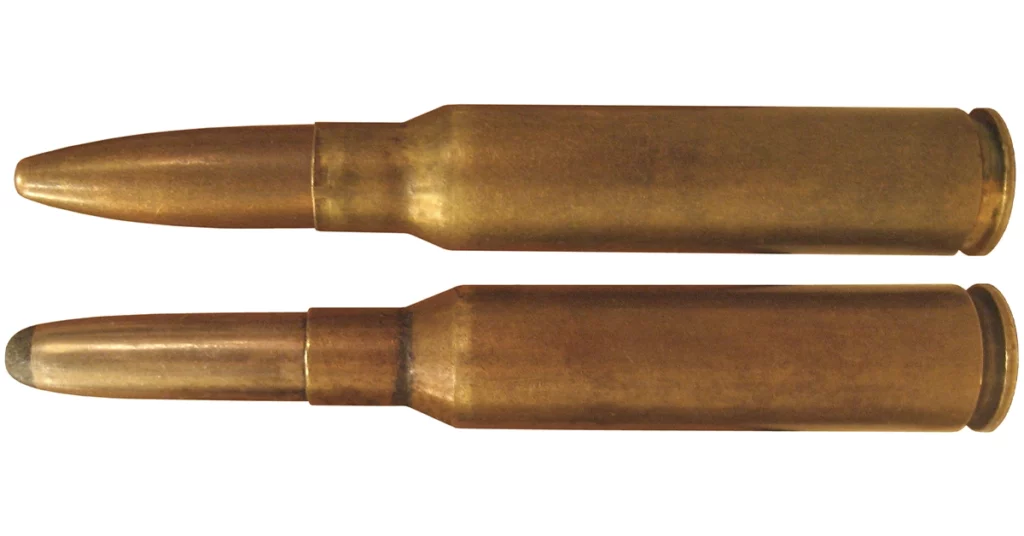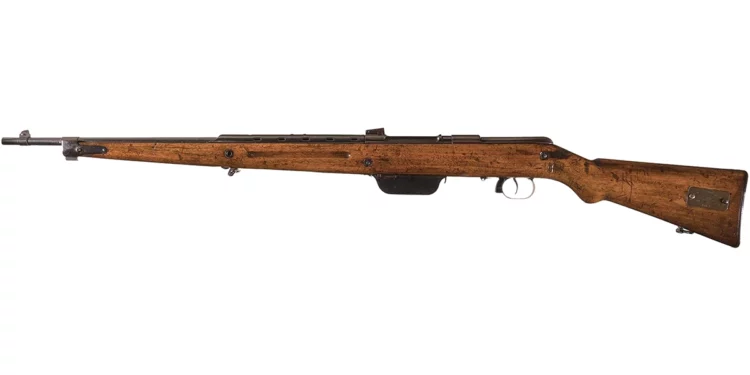By Michael Heidler
After numerous more-or-less successful attempts to create a semi-automatic military rifle, the Italian Army officially introduced a self-loading rifle on the eve of World War II, the Fucile Armaguerra Modello 39. But the project was not under a good star.
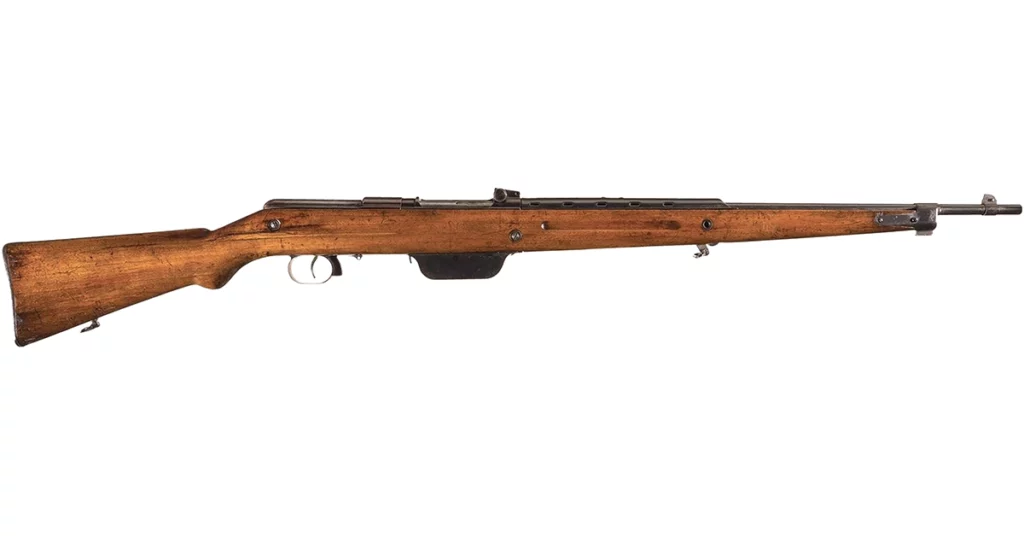
In 1938, the Italian armed forces had begun rearming to the new Carcano rifle models 91/38 chambered for the more powerful 7.35x51mm cartridge. In addition, the army was looking for a semi-automatic rifle in the new caliber to complement its armament.
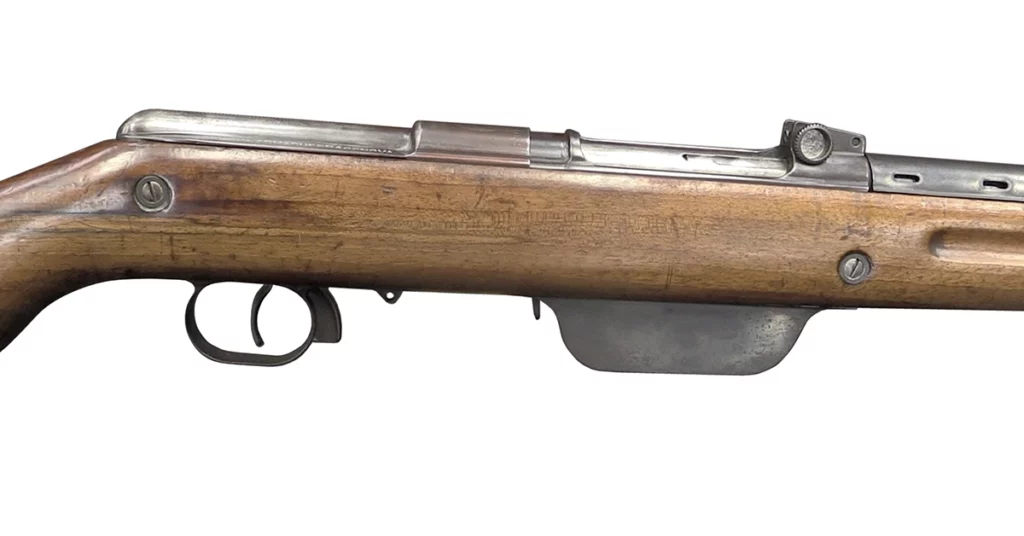
The Società Anonima Revelli Manifattura Armaguerra of Genoa submitted a prototype for a test firing in the spring of 1939. It was designed by Gino Revelli, a son of the well-known gun designer Abiel Bethel Revelli di Beaumont. By the way, the weapon got its name from the telegraph code of the company: Armaguerra. The recoil-operated rifle has two sling lugs, the front one of which also serves as a cocking handle. The operator grabs the sling near the lug, pushes in a spring-loaded release button, and then pulls the lug and bolt to the rear. The cartridge feed is from a standard 6-rounds clip. It is loaded into the gun from the top and drops out after the last cartridge is fired. After that, the breech remains in its rear position, allowing quick reloading. In front of the trigger guard is the bolt catch button, but it must be used with great care. The breechblock only moves forward when the feeder is depressed, for example with a finger. But then it rushes forward at high speed.
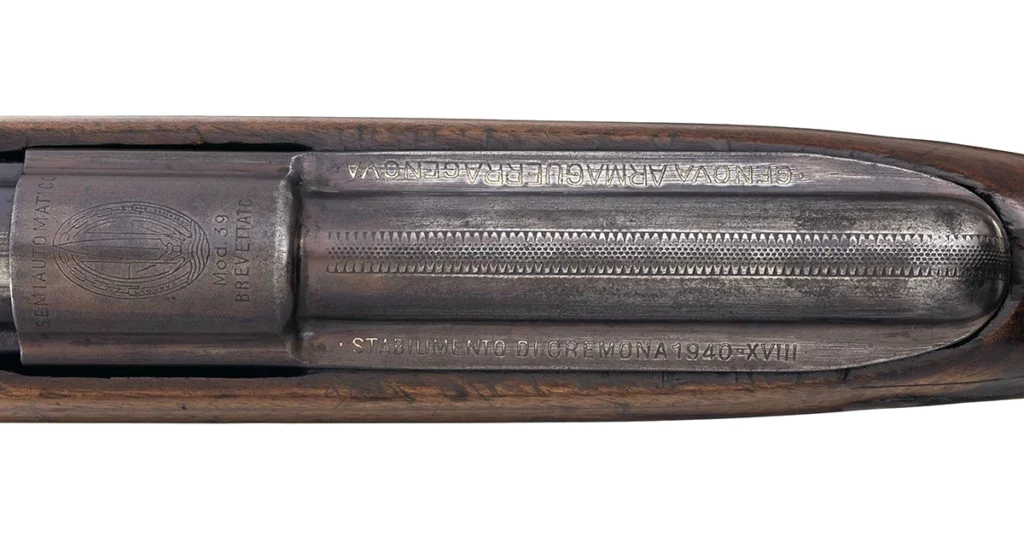
In the comparative tests, the Model 39 held its own against the competition and the test commission subsequently ordered 10,000 pieces. This was a great success – but also a problem, because the factory buildings in Genoa were simply too small to fulfill such an order. The company therefore acquired additional land in Cremona and built a new factory there. However, while serial production was still being set up, the army suddenly canceled its order. On June 10, 1940, Italy had declared war on Great Britain and France and entered World War II on the side of the Axis powers. The country’s own manufacturing capacity was not sufficient to complete the replacement of all Carcanos to the new caliber in the foreseeable future. In addition, the Army was concerned about a reliable ammunition supply with two different calibers in front-line use. Interestingly, the year of manufacture is stamped on the weapons in two chronologies. When the fascists seized power in 1922, the new rulers also introduced a new calendar: the first day of the first year of the Era Fascista was marked by the swearing-in of Benito Mussolini as prime minister on October 29, 1922. The XVIII of the specimen shown here is therefore a Roman 18 and, thus, also stands for 1940.
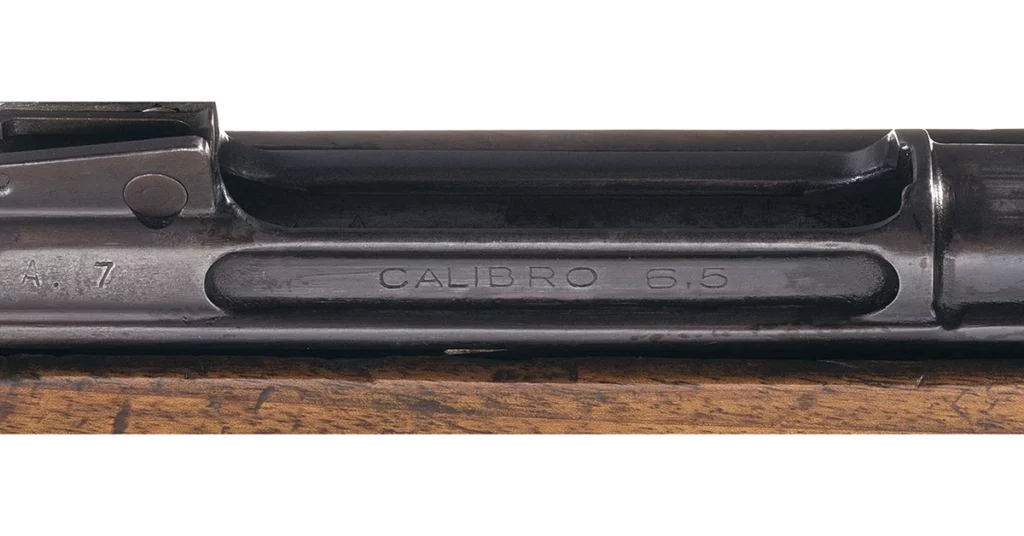
And so, all rifle production in the new caliber was stopped and returned to the old standard 6.5x52mm caliber. Gino Revelli then went back to work and changed the caliber of his weapon to 6.5mm, as well. Production got off to a slow start and by June 1942 the Army had only about 100 pieces in its inventory. Shortly thereafter, production ended, and the Cremona factory completely retooled to produce the bolt-action Carcano model 1891. The Armaguerra Modello 39 had simply come along at the worst possible time and it was a missed opportunity to give the soldiers an advantage on the battlefield.
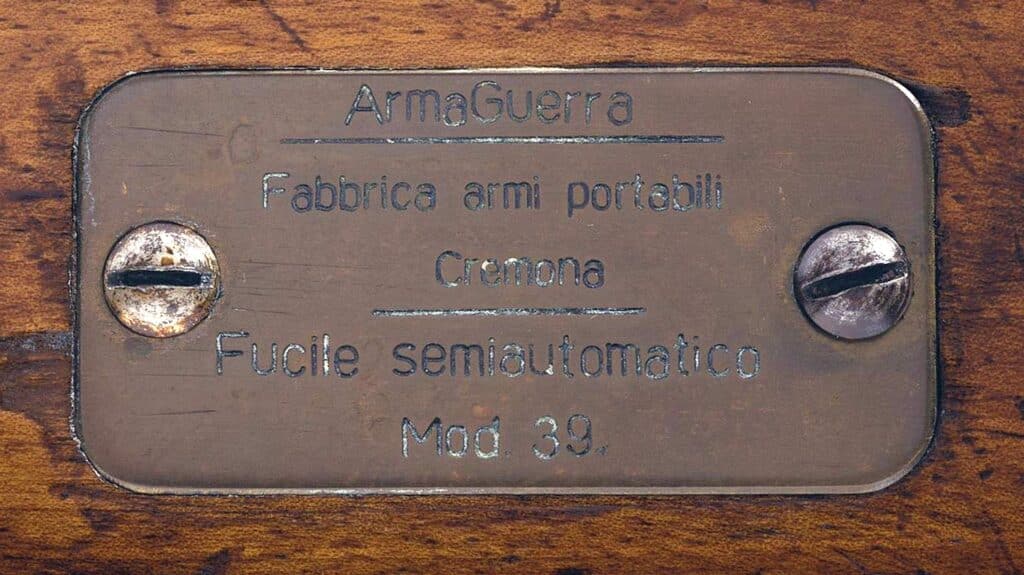
The serial number 7 shown here went under the hammer at Rock Island Auctions in December 2016 and reached a moderate $11,500. The Armaguerra is one of the rarest Italian military rifles, but it is not as sought after by collectors as, for example, the more common German Mauser G41(M) semi-automatic rifle, which often fetches much higher prices.
Technical Data:
| Caliber: | 7.35x51mm and 6.5x52mm |
| Length: | 46in (117cm) |
| Barrel Length: | 23.6in (60cm) |
| Weight (empty): | 8.2lb (3.7kg) |
| Capacity: | 6 cartridges in a clip |
